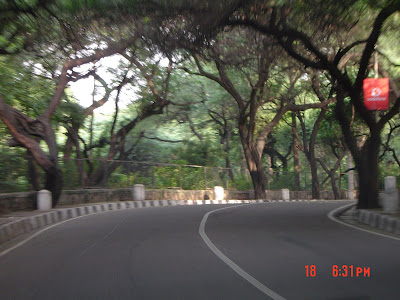Delhi Hotel Experience
1) The issue is founded only on the word of two people and I do not have any evidence, beyond circumstantial evidence, to back it up.
2) Equally importantly, I do not want the people who told me of this to suffer any adverse consequences which might affect their livelihoods.
Therefore, all places and persons in this account shall remain unnamed.
-------------------------------------------------------------
I had about an 11 hour overnight halt in Delhi on my trip to Bangalore and rather than try to spend the night uncomfortably at the Domestic Airport, I decided it would be better if I got a hotel room for the night and tried to get some sleep (even a few hours' worth). I found a cheap hotel in a Tibetan area of town and booked my reservation through an online travel website from the U.S.
I also arranged for a taxi pick-up service from the airport and as promised, the taxi driver was waiting at the airport for me when I landed. On the way to the hotel as I chatted with the taxi driver, he seemed surprised that I was staying at this particular hotel. When I asked why, he said that generally the hotel owners do not give out rooms to Indians! Shocked, I asked why a hotel, in India, would not give rooms to Indians. He said he did not know, but said that if an Indian were to inquire about a room, they would be told that there were no vacancies even if rooms were available! When I asked what business sense it made, the taxi driver replied that even he has not been able to figure it out up until now.
At the hotel, as I checked-in, the lobbyist wrote down my details, as per Government of India regulations. As he looked at my passport, he asked me what my visa number was (to fill in the portion of his hotel-book that asked for the visa number). When I asked why I, an Indian citizen, would need a visa number, he said OK and continued noting down details. It seemed to me as if the man had never seen an Indian passport before. A quick look at the guest-book also revealed only Tibetan and Western names.
I didn't get much sleep that night (it was 31 degrees at 11 p.m. when I landed in Delhi with about 85% humidity making it feel 9 degrees hotter (I am not joking!)) and was at the lobby the following morning at 7 a.m. and asked them to call me a taxi to return to the airport. I had a different taxi driver in the morning than I did the night before. On the way to the airport, as I chatted with him, he too remarked surprise at the fact that I, an Indian, was staying in this particular hotel. He asked me how I managed to get the room and when I told him I reserved it online, he nodded and said that made sense.
Let me state that I remain an ardent supporter of the Tibetan cause, especially following continued Chinese transgressions in Tibet. That doesn't excuse the actions of Tibetans within India however. The fact that a hotel in India would discriminate against Indians is beyond unacceptable; it's criminal. Tibetans are, after all, guests in this country. Tibetan refugees from China have the option of taking Indian citizenship, but the vast majority of them have declined to do so, following the Dalai Lama's advice that taking the citizenship of other countries would dilute their numbers and consequently, their claim for an independent Tibet.
Instead, they have availed themselves of Indian policies which have provided them papers to live and work anywhere in the Indian Union. They are automatically granted refugee status and these papers upon setting foot on Indian soil and there is no annual cap for the number of refugees India will provide shelter for. India is also the home of the Dalai Lama for the past 49 years and his Tibetan Government-in-Exile. More than 100,000 Tibetan refugees make India their home, more than any other nation in the world (twice the number in Nepal and more than 10 times the number in the United States).
In light of this generosity and support that the Indian people and the Indian government (irrespective of which political party is in power) have provided the Tibetan people, what I heard of the happenings in Delhi is disconcerting, to say the least. It's unfortunate that my opinion of the management of this hotel has tarred my views of the overall Tibetan community in India, the vast majority of whom I am sure will not support such discriminatory policies.





























